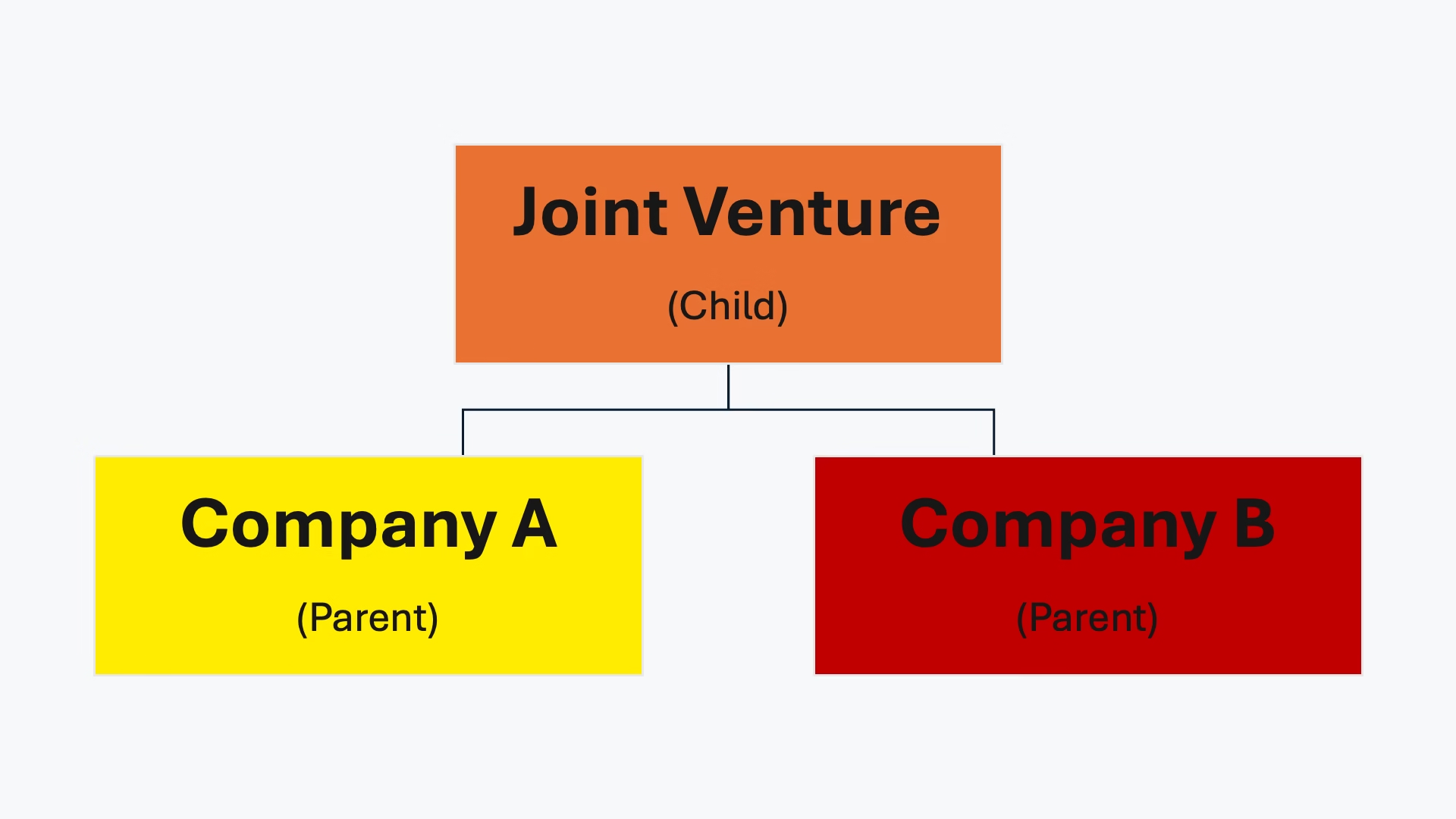Types of Joint Ventures
An overview of the main forms joint ventures can take, from equity-based to purely contractual arrangements.

In our earlier post, What is an International Joint Venture?, we explored how joint ventures serve as a bridge for companies expanding across borders. But understanding what a joint venture is only sets the stage. The next question is: what kinds of joint ventures exist, and how do their structures influence strategy and control?
Broadly, joint ventures can be organized as either equity or contractual arrangements, and within these categories, as 50/50 or majority-controlled partnerships. Each structure carries different implications for governance, cultural alignment, and long-term success.
Equity Joint Ventures (EJVs)
An equity joint venture is the most common type of formal partnership structure. In this structure, the parties involved create a new legal entity by contributing capital, resources, or assets. Each partner owns a percentage of this new entity based on their contribution, whether financial, intellectual property, or other valuable assets.
This new entity operates independently, with its own management team and board of directors that includes representatives from the founding companies. The board composition typically reflects the ownership percentages, though some arrangements may include special voting rights or veto powers for minority shareholders on key decisions.
Equity joint ventures are often chosen for long-term projects and where partners want to share profits, losses, and risks over and extended period. They provide a formal framework for governance and decision-making, as well as a clear division of ownership. This structure also offers tax advantages in many jurisdictions and can facilitate easier access to local markets, particularly in countries with foreign investment restrictions.
Contractual Joint Ventures (CJVs)
A contractual joint venture, also known as a non-equity joint venture or strategic alliance, does not involve creating a new legal entity. Instead, the parties sign a detailed contract or arrangement that outlines their roles, responsibilities, contributions, profit-sharing arrangements, and operational procedures.
This structure is often used for a specific, time-bound project, such as a construction initiatives, research and development programs, or market entry strategies. Contractual joint ventures are more flexible and less complex to establish than equity joint ventures, making them attractive for companies seeking collaboration without the legal and financial commitment of forming a new corporate entity.
Project-Based Joint Ventures
Project-based joint ventures represent a temporary form of collaboration focused on a single, specific undertaking. These arrangements are frequently seen in industries like construction, engineering, oil and gas exploration, and large infrastructure development, where multiple firms with different specializations combine their expertise to complete major projects.
Once the project is reaches completion, the joint venture is typically dissolved, though successful partnerships may lead to future collaborations. This structure is particularly valuable for sharing expertise, resources, and financial risks on a project-by-project basis, allowing companies to bid on and execute large contracts they could not handle independently.
Control and Ownership Structures
50/50 Joint Ventures
Equal ownership structures promote shared decision-making but can create deadlock situations when partners disagree on strategic issues. These arrangements work best when partners have complementary strengths and strong alignment on objectives.
Majority-Controlled Joint Ventures
When one partner holds majority control (typically 51% or more), decision-making becomes more streamlined, but the minority partner may have limited influence. Successful majority ventures often include protective provisions for minority partners, such as veto rights on major decisions or guaranteed board representation.
Regional and Legal Variations
Different jurisdictions have varying legal frameworks for joint ventures. China historically distinguished between equity joint ventures and cooperative joint ventures under its foreign investment laws, though recent reforms have simplified these structures. Chinese cooperative joint ventures were a hybrid model that allowed for more flexible profit-sharing arrangements than traditional equity structures. The European Union treats contractual alliances as the default choice for many cross-border collaborations, while the United States offers flexible incorporation options for equity-based partnerships.
Hybrid or Customized Structures
Not all joint ventures fit neatly into standard categories. Many successful partnerships combine features from different structures to meet specific business needs. Examples include:
Equity joint ventures with extensive contractual agreements governing operational details
Majority ventures with minority veto rights on key strategic decisions
Phased structures that begin as contractual arrangements and evolve into equity partnerships
Sector-specific models tailored to regulatory requirements in industries like telecommunications or financial services
When Partnerships Lead to Consolidation
While mergers and acquisitions represent permanent combinations rather than joint ventures, many successful M&A transactions begin with collaborative partnerships. Companies often use joint ventures as a “try before you buy” approach, allowing them to assess compatibility, operational synergies, and cultural fit before committing to full consolidation. This graduated approach can reduce transaction risks and provide valuable insights into integration challenges, making eventual mergers or acquisitions more likely to succeed.
Conclusion
Choosing the right type of joint venture depends on multiple factors, such as the business objectives of the partnering companies, the nature of the collaboration, the level of commitment and control desired, regulatory requirements, and the time horizon for the partnership. Successful joint ventures require careful structural planning, clear governance frameworks, and ongoing attention to partner relationships. Whether pursuing equity-based partnerships for long-term market entry, contractual alliances for specific projects, or hybrid structures for complex collaborations, the main objective is to align the joint venture structure with the strategic objectives and risk tolerance while preserving flexibility to adapt to evolving circumstances.


